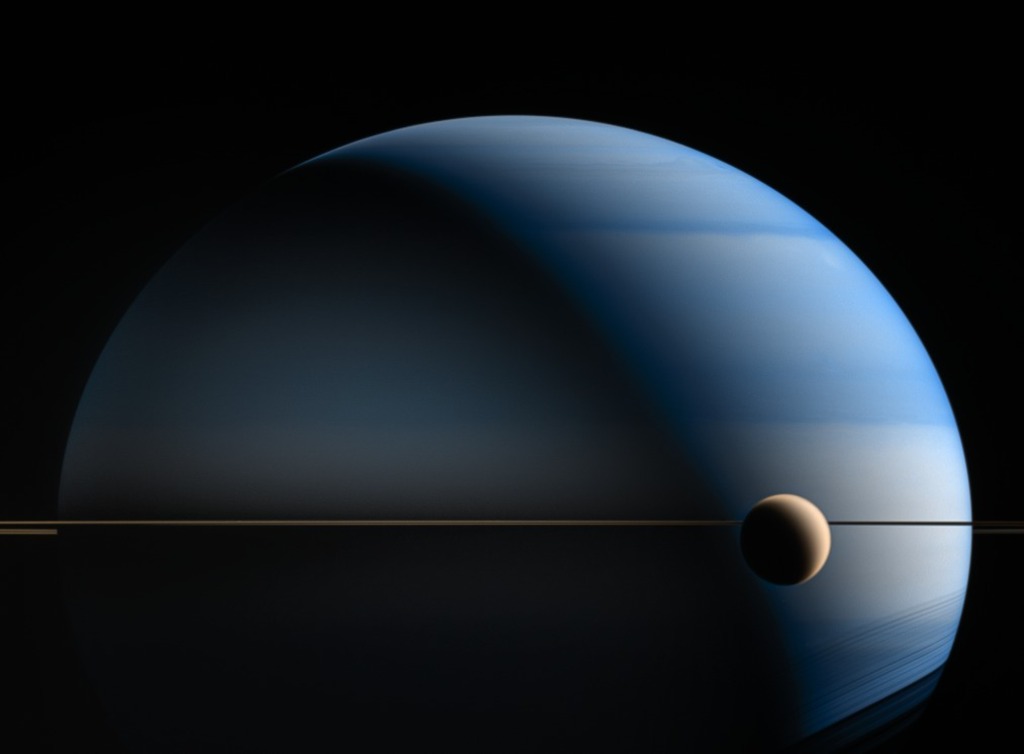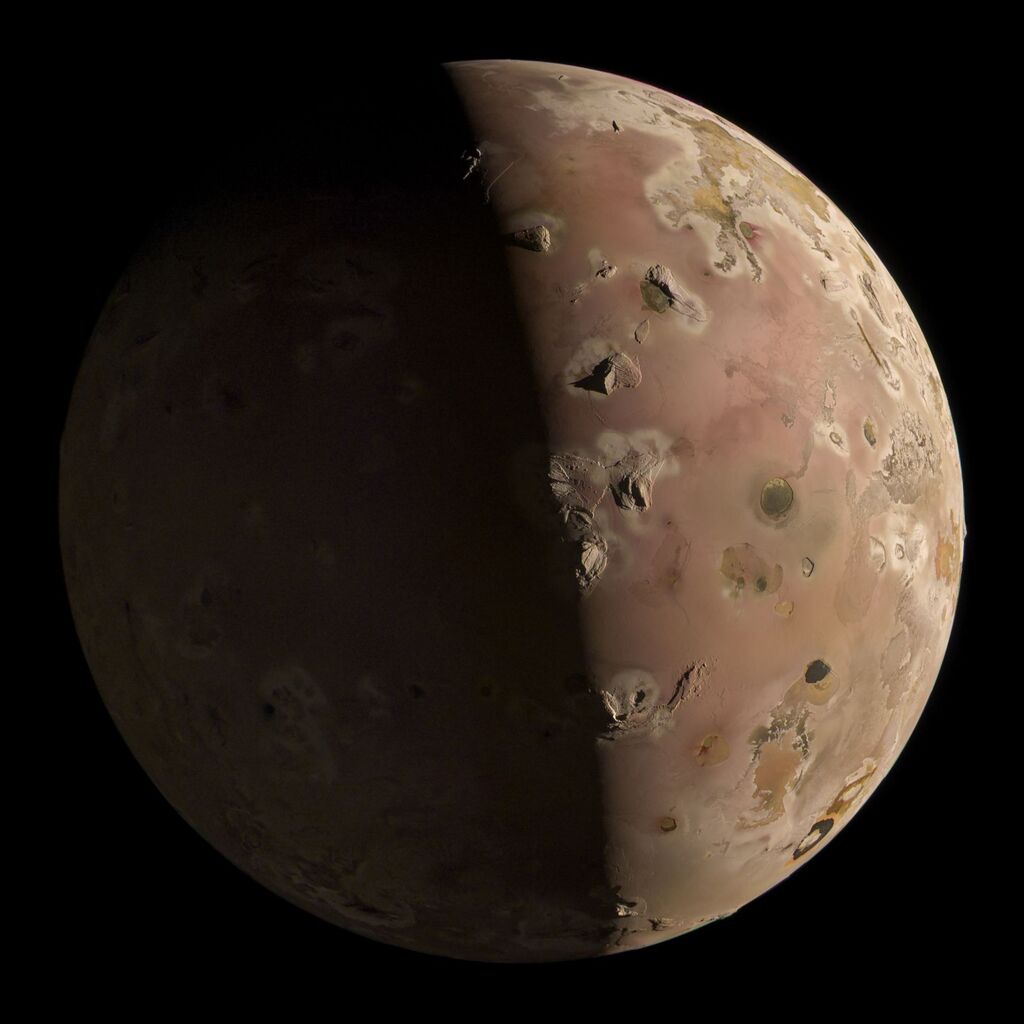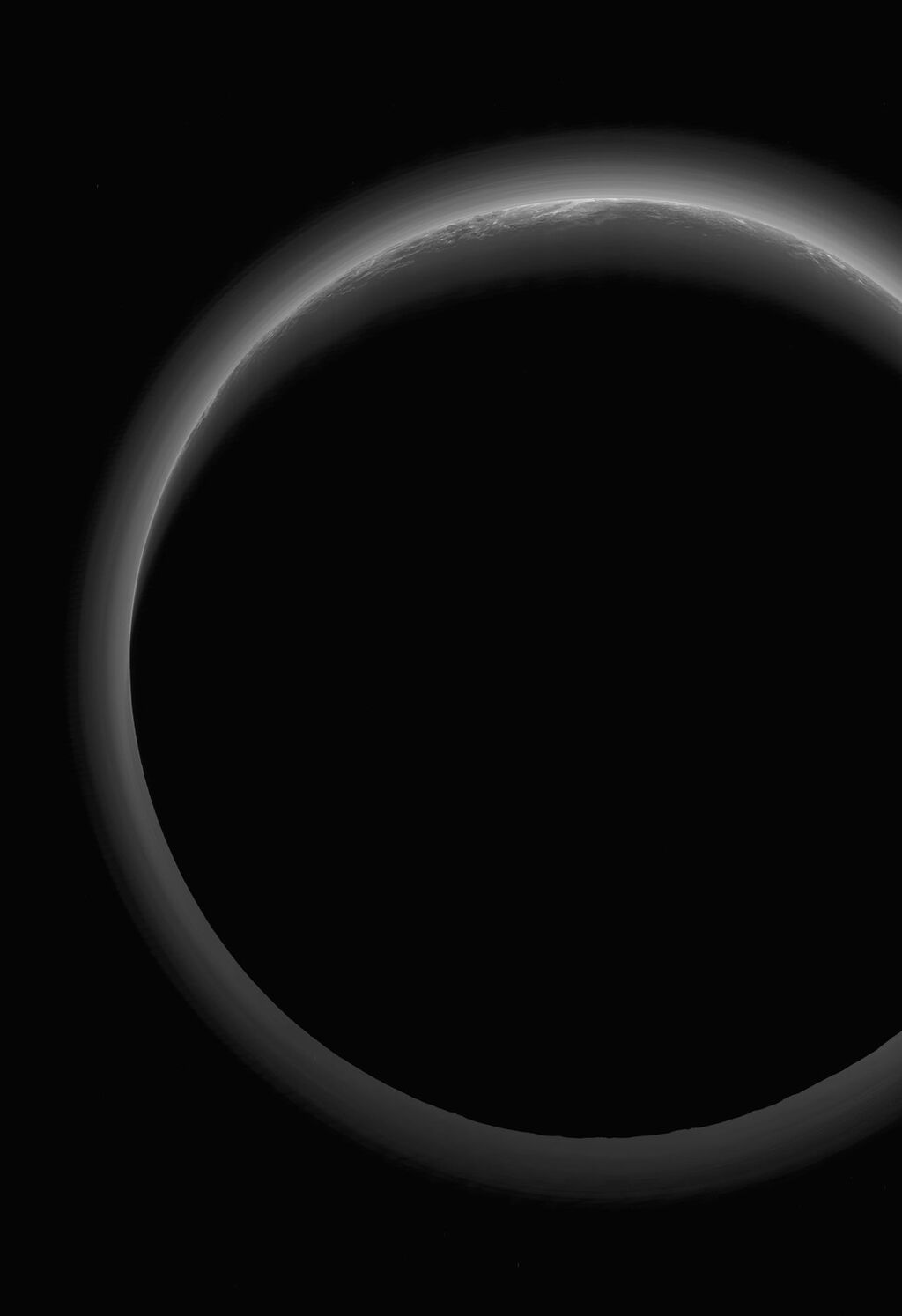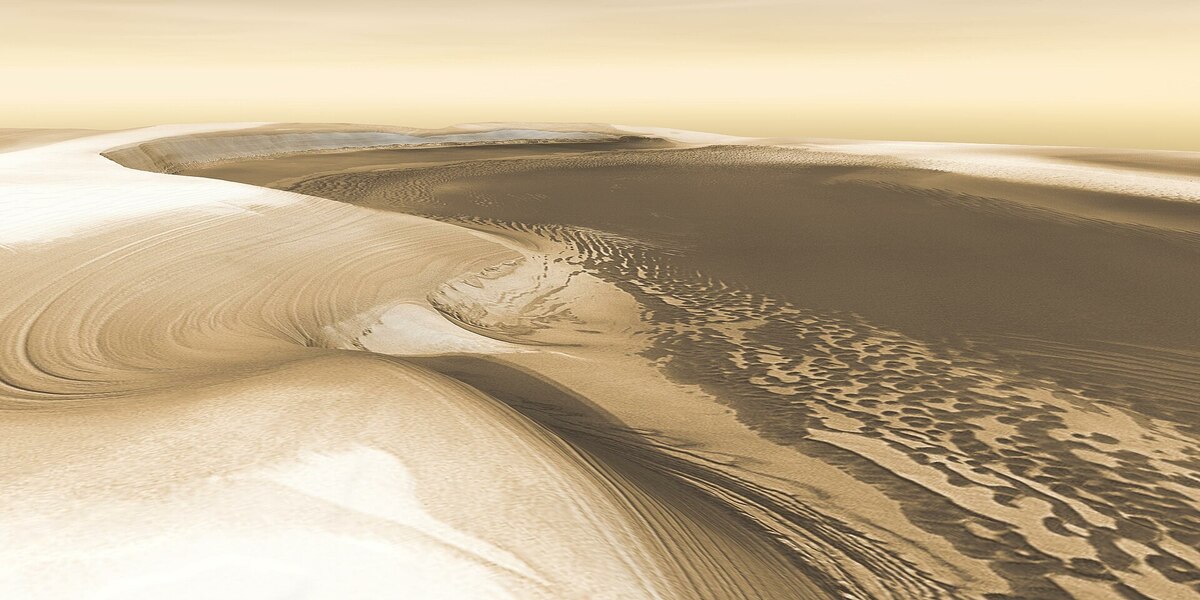
Planetary Picture of the Day
Week of November 18, 2024
Spacecraft took all of our images this week! Two from Juno, one from Cassini, one from MRO, and one from New Horizons.
Monday, 18 November 2024

Northern Eye Storm on Jupiter
NASA's Juno spacecraft captured a view of this Earth-sized storm in Jupiter's northern hemisphere during its thirteenth perijove pass on May 24, 2018. This is a composite from high-res raw RGB data, cropped and processed for maximum balefulness.
Tuesday, 19 November 2024

Saturn and Titan
Titan transits Saturn in this false-color, near-infrared image taken by NASA's Cassini spacecraft on May 22, 2015. Titan, which is larger than Mercury, is the only moon in our solar system with a substantial atmosphere and is the only place besides Earth known to have liquids in the form of rivers, lakes, and seas on its surface. These liquids are hydrocarbons like methane and ethane.
Wednesday, 20 November 2024

Io, Close Up
Jupiter's innermost moon, Io, was captured by the JunoCam instrument onboard NASA's Juno spacecraft during Perijove 57 on 30 December 2023. The image is processed in approximate true color as the human eye would see it. Note the amazing details in Io's volcanoes!
Thursday, 21 November 2024

Earth by Juno
The night side of Pluto spans this shadowy scene. From the stunning space-based perspective, the Sun is 4.9 billion kilometers (almost 4.5 light-hours) behind the dim and distant world. It was captured by far-flung New Horizons in July of 2015 when the spacecraft was at a range of some 21,000 kilometers from Pluto, about 19 minutes after its closest approach. A denizen of the KuiperBelt in dramatic silhouette, the image also reveals Pluto's tenuous, surprisingly complex layers of hazy atmosphere. Near the top of the frame, the crescent twilight landscape includes southern areas of nitrogen ice plains now formally known as SputnikPlanitia and rugged mountains of water-ice in the Norgay Montes.
Friday, 22 November 2024

Chasma Borealis and the North Polar Ice Cap
Climatic cycles of ice and dust built the Martian polar caps, season by season, year by year — and then whittled down their size when the climate changed. Here, we are looking at the head of Chasma Boreale, a canyon that reaches 570 kilometers into the north polar cap. Canyon walls rise about 1,400 meters above the floor. Where the edge of the ice cap has retreated, sheets of sand that accumulated during earlier ice-free climatic cycles are emerging. Winds blowing off the ice have pushed loose sand into dunes, then driven them down-canyon in a westward direction, toward our viewpoint.





